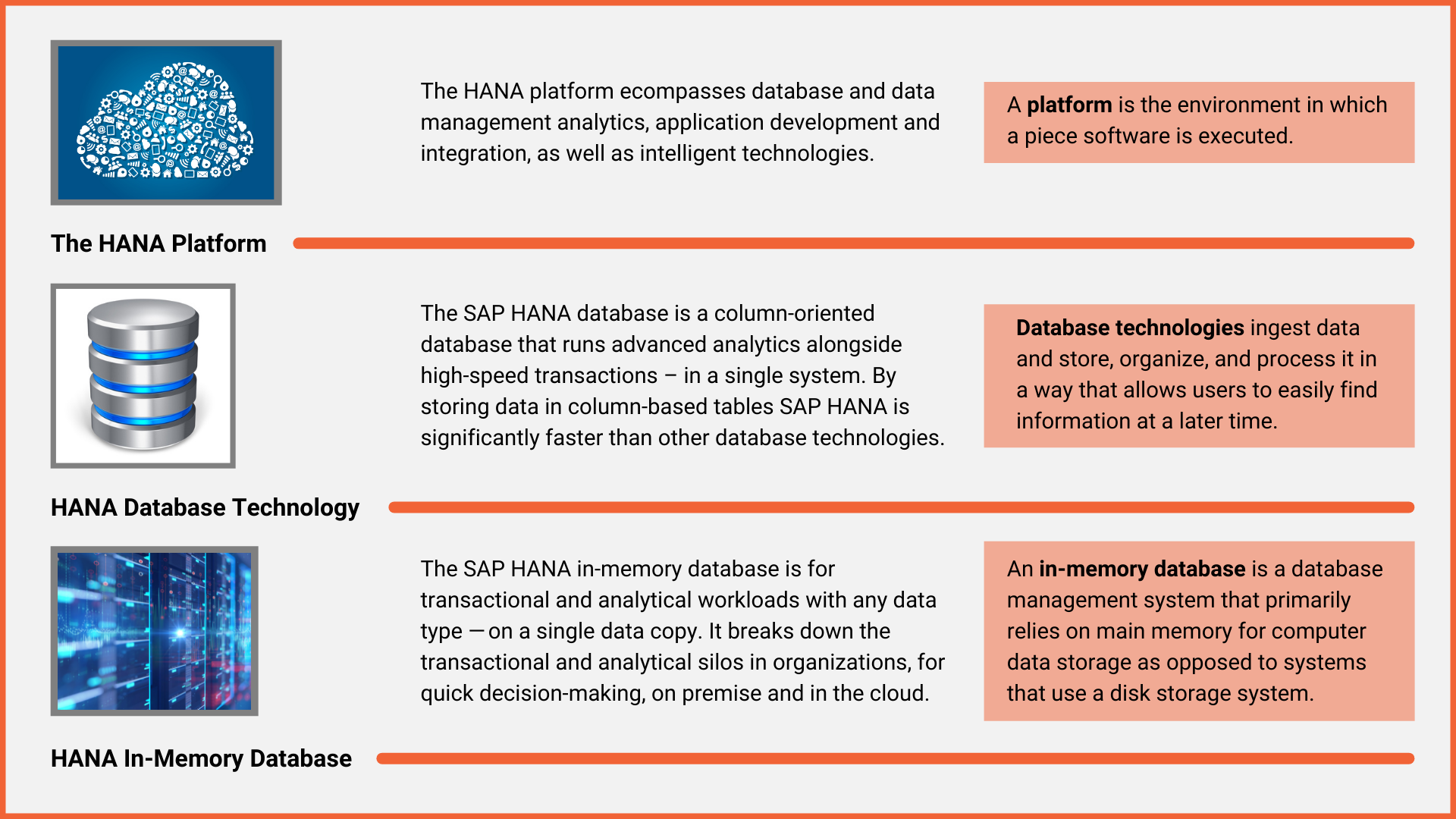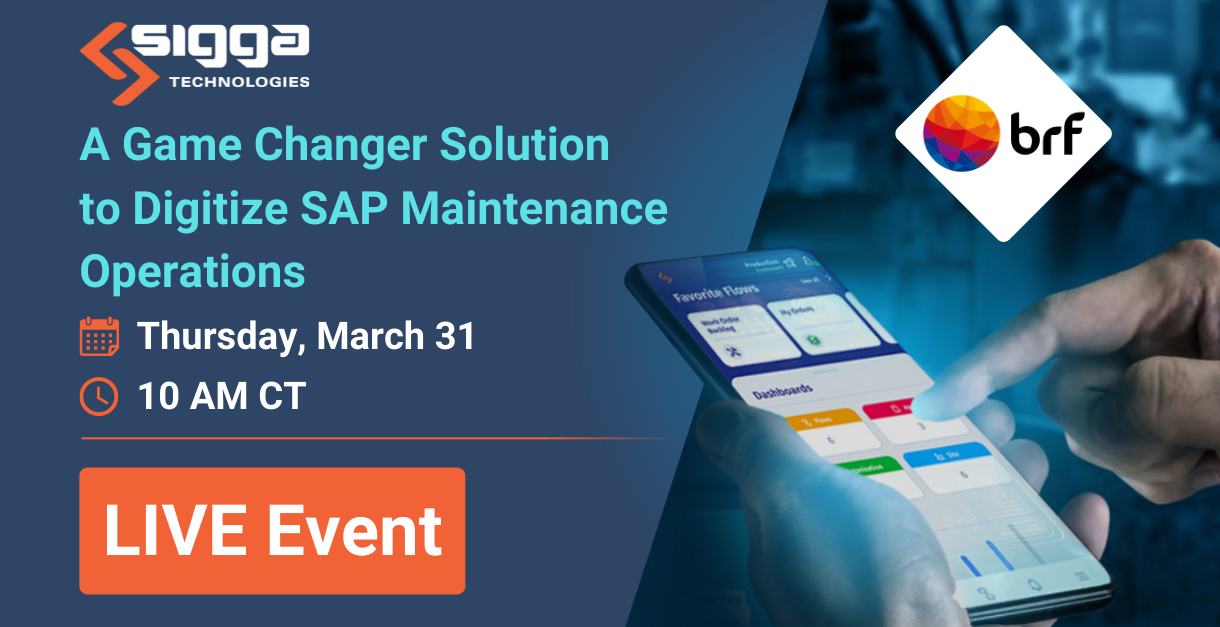With a 2027 deadline looming, companies are making plans to migrate SAP ECC to S/4HANA – the biggest update to SAP’s ERP platform in over two decades. SAP S/4HANA removes the separation between operational and analytical systems and allows business users to access operational data in real-time. In addition, SAP S/4HANA offers simplified functionality which results in lower IT and maintenance costs, a higher reaction speed and user efficiency.
So, should you sit back and wait for IT to finish the migration, right? Then, you can update and optimize your maintenance operations processes to take advantage of the power of SAP S/HANA?
Wrong. Migrating to SAP S/4 HANA is not just an IT migration challenge. It’s a whole business challenge. And you can help by preparing your EAM processes for the transition now. Read on to understand the benefits to you and your IT team.
What is SAP S/4HANA
SAP S/4 HANA is SAP’s ERP system for large enterprise customers and replaces SAP R/3. The S/4HANA solution is designed to run on SAP HANA, a database management system that stores and retrieves data requested by applications.
SAP HANA has three main parts:

Challenges with Migrating SAP ECC to S/4HANA
Platform migrations of any type can be overwhelming and cause concern for both business users and the IT department. Let’s look at some of the specific challenges organizations face when migrating SAP ECC to S/4HANA.
Too Much Dirty Data
The old saying “Garbage In, Garbage Out” is certainly true with any database migration. Organizations underestimate the poor state of the data within their ERP systems. Given SAP ECC did not make it easy to maintain and obsolete un-needed records, there is likely terabytes of data that has been collected for upwards of 20 years. Not only is trying to move all of this data cost prohibitive but doing so would result in migrating data that is not needed. Migrating too much data and dirty data does not allow companies to take advantage of (and could inhibit) SAP S/4HANA’s single ERP data structure, which is faster and nimbler than its predecessor.
Outdated Business Processes
Companies that are pulling data out of SAP, such as printing paperwork orders, and then manually inputting updates later cannot take advantage of many of the new features in SAP S/4HANA. According to SAP, “SAP S/4HANA is a complete enterprise resource planning (ERP) system with built-in intelligent technologies, including AI, machine learning, and advanced analytics. It helps companies adopt new business models, manage business change at speed, orchestrate internal and external resources, and use the predictive power of AI.”
Keeping data digital is key to real-time data visibility and decision-making across the organization. Capturing data once, at the source will not only help with data access, but also with data quality and process efficiency. SAP S/4HANA was designed specifically to support access by front-end workers through solutions that provide an intuitive, productive, real-time user interface to SAP S/4HANA data.
Outdated Custom Code
While SAP S/4HANA offers many advantages over its predecessor, it is designed around a higher degree of standardization and doesn’t support the degree of modifications with custom code allowed in the past. According to a recent study by the American SAP User Group (ASUG), 91% of the 110 companies surveyed said they use custom code. The same study found that on average, 45% of organizations’ most valuable custom SAP code was developed 6 or more years ago. The existence of custom code if not replaced beforehand can impede migration of SAP ECC to S/4HANA.
Maintenance Operations Process Improvements for Migrating SAP ECC to S4/HANA
SAP Press states, “The basic concept of SAP S/4HANA is its pledge to prepare enterprises for the challenges of the coming decades. Restricting yourself to a purely technical update of existing systems and landscapes would be an inadequate simplification. You should analyze whether your processes have grown as well as whether your system landscape will be sustainable in the future or whether its structure is obsolete and should thus be adjusted.”
Implementing maintenance operations process improvements before SAP ECC to S4/HANA transition brings efficiency improvements while overcoming the migration challenges. Here are some steps asset-intensive organizations can take to ease the stress of converting to SAP S4/HANA.
Clean-up Existing Data
The most important step maintenance operations management can take prior to migrating SAP ECC to S/4HANA is to clean up your existing EAM data. This cleanup can help to improve both transactional and master data quality, as well as reduce the data memory or footprint.
SAP Insider explains, “Data quality and integrity are fundamental considerations in the move to SAP S/4HANA. Migrating master data, especially material master data to SAP S/4HANA, offers the chance to not only clean your data so that it fulfils the needs for S4/HANA, but also to standardize, and enrich.”
It’s important to identify what data should be migrated to SAP S/4HANA and what shouldn’t. Companies should examine and clean every facet of EAM data before beginning the migration. Some examples of this data in the SAP PM include:
- Equipment Master
- Bill of Materials
- Work Centers
- Maintenance Plans
- Maintenance Items
- Measuring Points
You can reduce the complexity of the migration by identifying master data with no or low activity. For example, identify vendors which are no longer used that can be archived or deleted. Eliminate data on equipment that no longer exists and has been replaced.
In addition, clean up the backlog by closing out old transactional documents such as outdated purchase orders or maintenance requests. Not migrating unneeded data over to SAP S/4HANA will speed up the process and improve the usability of the data this is migrated.
Structure Processes and Data Capture
After your existing data has been cleaned-up, it’s important to address business processes and data capture. Take the time to identify which processes should be changed, optimized, combined, eliminated or simplified. If your technicians are working off paper-based work orders which then require data entry of status back into SAP, you won’t be able to take advantage of the power of the real-time information that SAP S/4HANA offers.
Eliminating any paper based processes by deploying a modern software interface to SAP should be first step. These systems can help streamline your core maintenance process steps and remove unnecessary work, like manually entering data into SAP, while structuring the data inputs into SAP. For example, you can minimize random open text inputs that are hard to analyze by implementing drop down menus with common text inputs. Consider the following example.
A petrochemical plant in South Africa using SAP for plant maintenance wanted to understand the core reasons why jobs were not being completed on their first attempt. Within the SAP database, they found over 1,100 different reason descriptions for a job failing for lack of availability of replacement parts. There were no predefined descriptions for “missing the part”.
AI, when used correctly to make good decisions quickly, requires that the data being used to make decisions is available and accurate. If you have messy master data due to inefficient business processes, then you can’t utilize the data to drive process improvements.
Replace Custom Code
As discussed earlier, prior versions of SAP were more conducive to custom code than SAP S/4HANA. Companies with custom hard-coded maintenance operations processes need to deploy flexible software applications that integrate with SAP to handle any needed customizations. Modern software applications eliminate the need for hard-coded changes in SAP and allow companies to take advantage of the analytics, machine learning and other advantages SAP S/4HANA has to offer.
SAP explains, “The custom code you’ve added to your existing SAP ERP system must be checked and, in some cases, updated before moving it to an SAP S/4HANA system.” Any custom code that is no longer being used should not be migrated. Replacing custom code with front-end software applications can save time, money and headaches during migration.
>Enable Front-end User Access to SAP
Since the interface to SAP ECC is complicated, it’s natural that access to it may be limited to certain individuals who are familiar with the navigation and codes needed to enter data, approve actions, and perform other tasks. One important process change that is a must prior to an SAP S/4HANA migration is to cut out any middlemen and allow end-users direct access to SAP through a modern software interface. For warehouse and maintenance operations, this means putting mobile devices in the hands of maintenance technicians, inventory clerks and shipping and receiving personnel to access and capture data quickly and efficiently.
SAP S/4HANA is designed to provide real-time information on everything from maintenance task status to current parts inventory availability. Information cannot be real-time if work orders are printed and then updated later through data entry of work order status.
SAP ECC to S/4HANA Migration Takes a Village
Now is the time to start preparing your maintenance operations processes for SAP S/4HANA. IT will thank you for making their job significantly easier, less costly, and less prone to errors. Plus, you’ll benefit from process improvements and efficiencies much sooner than if you wait until after the migration.
Deploying modern software interfaces for front-end workers can help significantly to structure and optimize business processes while starting to deliver on the future benefits expected with SAP ECC to S4/HANA migration. Gain real-time data to make better business decisions, improve operational efficiency, and reduce costs. It truly takes a village, not just IT, to make the migration a success.
Mobilize Maintenance Operations
Here at Sigga, we have been helping asset-intensive industries through ERP transitions for over 20 years with a focus on Enterprise Asset Management. Today, our mobile and software solutions are specifically designed for enterprise-scale, mixed SAP environments. We understand the challenges and opportunities afforded by SAP in every evolution of their ERP, including the latest push to SAP S4/HANA.
Specifically, our SAP-certified EAM solutions help optimize SAP by improving the capture, structure, and quality of your data before or after migration to SAP S/4HANA (preferably before to help the transition).
- Our Sigga EAM Empower mobile application eliminates paper-based processes and digitizes the entire maintenance process connecting front-end technicians to SAP. Sigga EAM empower is built on a breakthrough no-code application platform, which means anyone can create new business rules and workflows without coding knowledge replacing the need to port over custom SAP ECC processes into SAP S/4HANA.
- Our integrated Planning & Scheduling desktop software provides an interface to view and clean up the backlog before migration to SAP S/4HANA. Our software enables you to do mass updates on multiple records in SAP without having to open each work order or equipment master data record to make a change.
With our EAM products for SAP, your company can better prepare for an SAP ECC to S/4HANA migration. Let us help you make sure your data and processes are optimized so your maintenance operations are fully ready to take advantage of the speed, data analysis, and real-time information that SAP S/4HANA has to offer.

